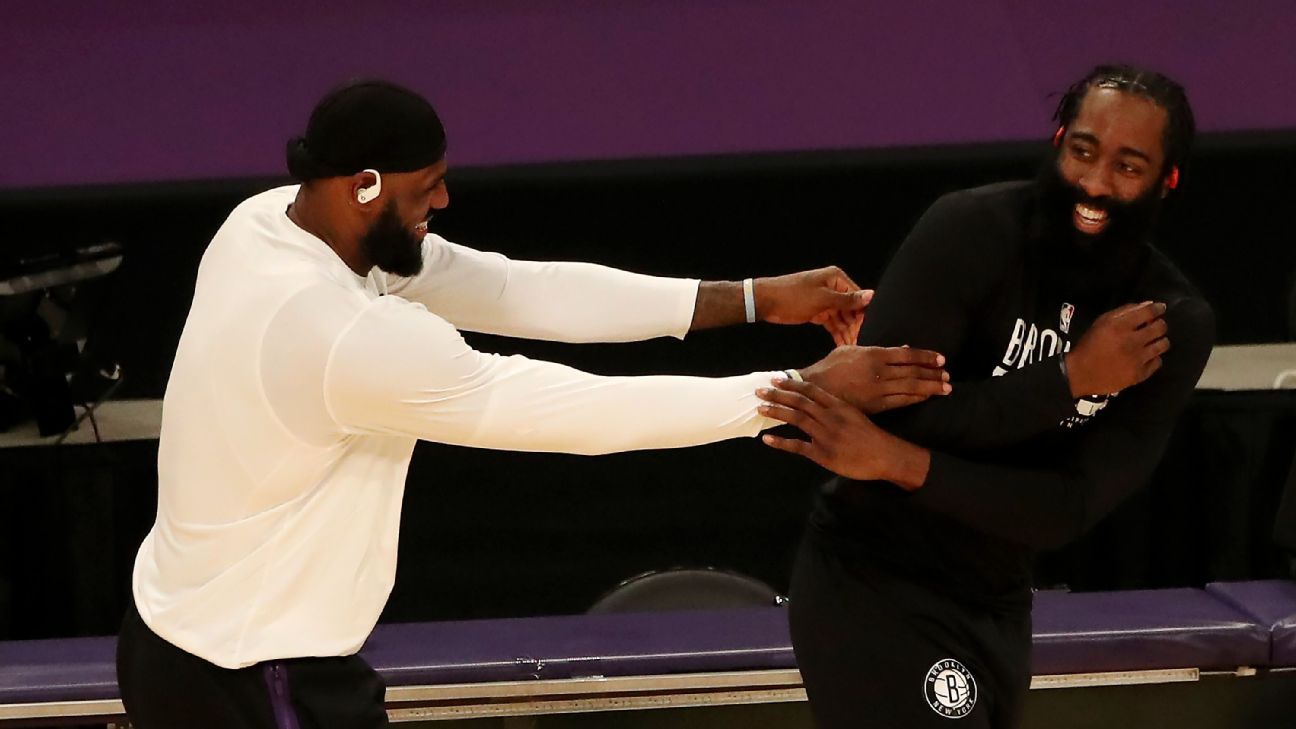
IMAGINE THE STAR power on the floor in a Brooklyn Nets vs. Los Angeles Lakers NBA Finals this summer. MVP candidate and three-time scoring champion James Harden runs the pick-and-roll with two-time Finals MVP Kevin Durant before swinging the ball to Kyrie Irving, seven-time All-Star and owner of one of the most iconic shots in NBA history. Defending that action: One of the two greatest players ever (LeBron James) and a four-time All-NBA First Team standout (Anthony Davis).
More than any other major sports league, the NBA is driven by superstar talent. Those five players are not just awesome to watch. They also have an enormous influence on which teams win and lose NBA titles. Since 2012, Durant, James and LA Clippers wing Kawhi Leonard have combined to win eight of nine Finals MVP awards.
That’s remarkable, but that’s not all this crew has in common. Each of these guys has also played for three different teams in that same span. While they were originally drafted into small-market organizations, all three are now playing basketball in Los Angeles or New York, propelling big-city organizations into championship contenders.
The NBA’s superstars are moving around more than ever, and these super-migrations are by no means random. The league’s most elite talent is congregating into a tiny set of the league’s most cosmopolitan markets.
On the one hand, this is a positive development — the league’s brightest stars have progressively used their power to rightfully get where and what they want. But these superclusters of talent are increasingly threatening championship viabilities in a majority of NBA markets.
Here are the startling numbers behind NBA superstars’ increasing move to coastal elite status, plus what it means for the next wave of transcendent players.
